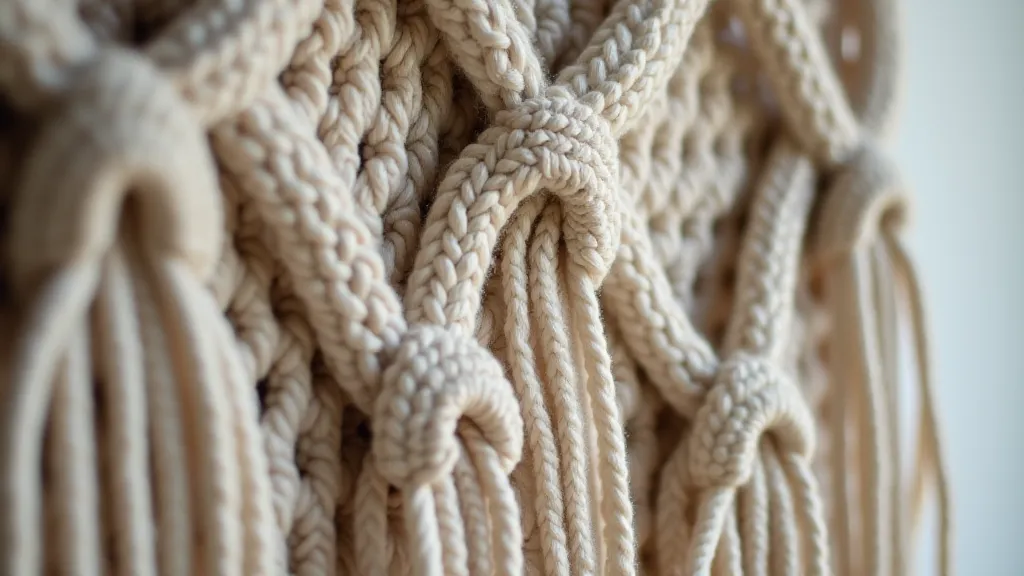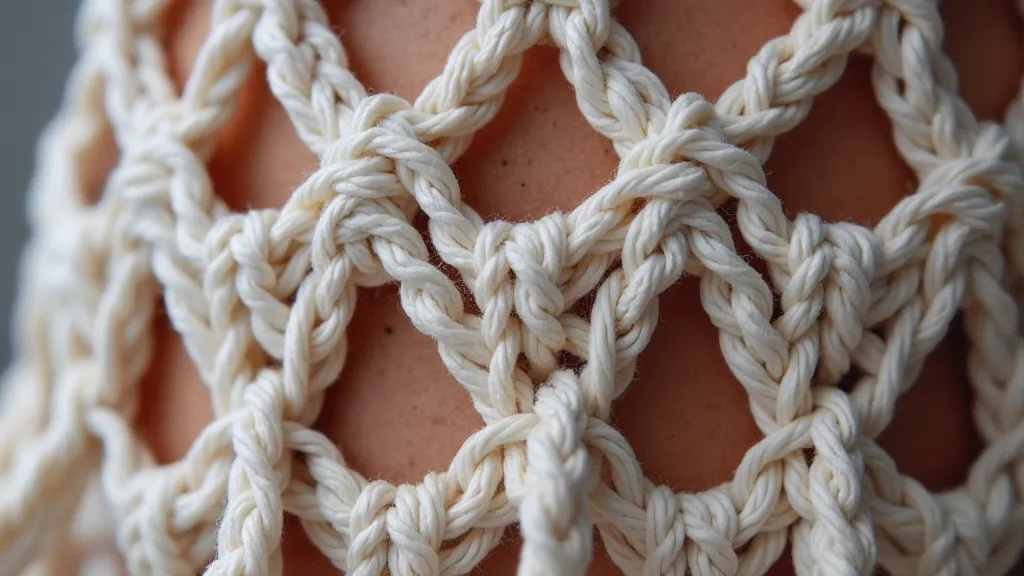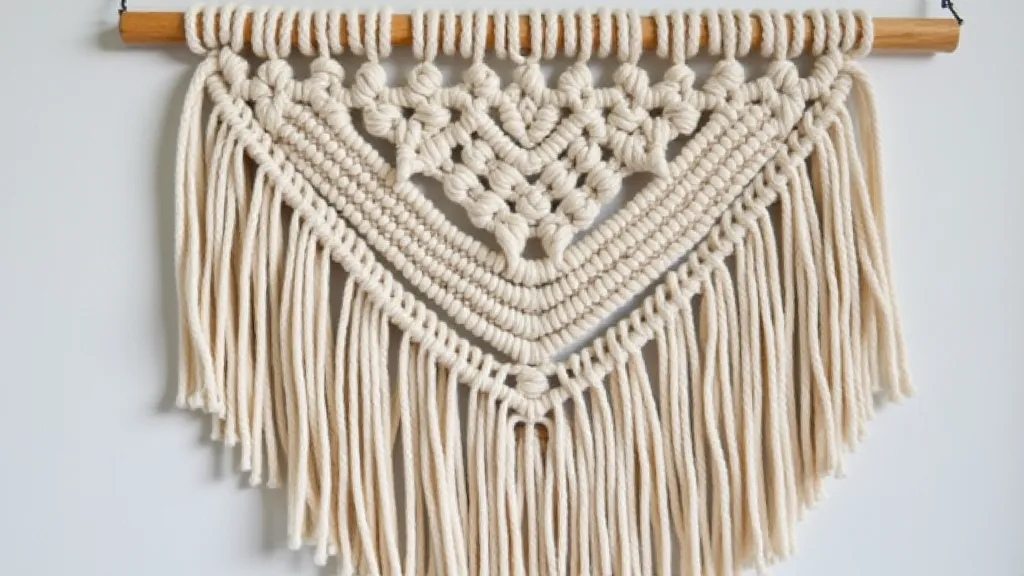Troubleshooting Common Macrame Tension Issues
Macrame is a beautiful craft, offering a connection to ancient traditions and a rewarding creative outlet. However, achieving consistent tension in your knots can be one of the most frustrating hurdles for beginners. Too loose, and your project will be floppy. Too tight, and it can be stiff and difficult to work with. This guide dives into common tension problems and provides actionable tips to achieve that perfect balance.
Why Tension Matters
Consistent tension isn’t just about aesthetics; it affects the structural integrity of your macrame piece. Uneven tension can lead to warping, a sloppy look, and potentially weaken the knots over time. It’s also fundamental to achieving the intended design; a slight imbalance in tension can drastically alter the appearance of patterns and shapes. Ultimately, understanding how to control tension is a core skill in macrame, almost as important as learning the basic knots themselves. The journey of mastering macrame is deeply tied to understanding the material – and sometimes, that means understanding more about the understanding macrame cord you’re using.
Common Tension Problems & Solutions
1. Knots Too Loose
Problem: Your knots look airy and spaced out. The project feels flimsy.
Possible Causes:
- Not pulling the knots tight enough initially.
- Using overly thick cord that’s difficult to pull taut.
- Not consistently pulling the working cords in the same direction.
- Incorrect knotting technique – ensuring you’re executing each knot precisely can make a big difference.
Solutions:
- Pull with Purpose: When tying a knot, consciously pull the cords firmly and evenly. A good tug after each knot helps. Really focus on the sensation of the cord settling into place.
- Cord Choice: If you’re struggling, consider using a thinner cord. It's easier to control. Experimenting with different cord weights and materials will broaden your skillset. It's also worth understanding how different knot types, like the double half hitch knot, can impact the overall look and tension of a project.
- Consistent Direction: Always pull your working cords in the same direction (e.g., always pull upwards). This creates a rhythm and predictability that aids in tension control.
- Small Adjustments: After tying several knots, take a moment to readjust the whole section, gently tightening any areas that feel loose. This is especially helpful in larger projects.
- Practice Makes Perfect: Tension is largely intuitive. Don't be afraid to untie and redo a section until you achieve the desired result.

2. Knots Too Tight
Problem: Your project feels rigid and the cord is difficult to manipulate. The knots appear small and cramped.
Possible Causes:
- Pulling the knots too hard initially.
- Using a stiff or thick cord.
- Applying uneven pressure when tightening.
- Tension creeping in due to a design that naturally requires it.
Solutions:
- Ease Up on the Pull: Be mindful of how much force you're applying. You want a firm pull, not a Herculean one. Focus on control rather than brute strength.
- Cord Choice: Softer cords are more forgiving and easier to work with. Natural fibers like cotton and jute are generally easier to manipulate than synthetic options. Understanding the nuances of exploring different macrame cord materials, like hemp versus cotton, can significantly impact your ability to achieve the desired tension.
- Consistent Pressure: Try to pull with a more even distribution of force on the cords. Avoid favoring one cord over another.
- Loosening Techniques: If a section feels too tight, gently massage the cords to loosen them. You can also try "easing" the knots by slightly repositioning them.
- Understand Cord Properties: Different cords have different levels of elasticity. Knowing how your chosen cord will react to tension is key.

3. Uneven Tension Across the Project
Problem: Some areas of your project are loose, while others are tight. This creates a lopsided or distorted appearance.
Possible Causes:
- Inconsistent knotting technique.
- Working in different lighting conditions.
- Fatigue – your grip and tension may weaken as you work.
- A design that isn’t inherently balanced.
Solutions:
- Practice & Consistency: The key is repetition. The more you practice, the more consistent your tension will become. Consider recording yourself tying knots to identify areas for improvement.
- Lighting Awareness: Work in consistent lighting so you can accurately judge tension. Shadow and glare can be deceiving.
- Take Breaks: Fatigue can lead to uneven tension. Short breaks will help you maintain focus and control.
- Regular Checks: Periodically step back and assess the overall tension of your project. Make adjustments as needed. A fresh perspective can reveal inconsistencies you might have missed.
- Embrace the Process: Macrame is about more than just the finished product; it's a meditative practice. Taking the time to truly connect with the materials and the process can lead to more consistent results. It's about finding grace in the imperfections – fractured symmetry – and appreciating the unique character that emerges from each creation. It’s a tradition that resonates with echoes of the weaver, connecting us to ancestral rhythms.

Advanced Tension Considerations
Beyond the basic tension issues, understanding how design elements impact tension is crucial. Complex patterns or projects incorporating multiple textures will naturally demand more attention to detail. Working with asymmetrical designs will require constant adjustments to maintain balance. Think of each knot as a tiny decision – and a consistent approach leads to a cohesive final piece. Sometimes the challenge isn't just about achieving even tension, but about creating a deliberate visual effect. The Silent Conversation that occurs between the maker and the material – and the resulting tension – is what truly defines a beautiful macrame project.
Troubleshooting Specific Project Types
The techniques for managing tension will vary depending on the project. For instance, creating a dense wall hanging demands a different approach than crafting a delicate plant hanger. In larger projects, it’s essential to work in stages, regularly checking your progress and making adjustments as needed. Consider using a large frame or mounting your project on a wall to facilitate this process. Smaller projects often benefit from a more relaxed approach, allowing for more experimentation and artistic expression. Ultimately, success lies in understanding the inherent qualities of the materials you choose and how they interact with the chosen design.
Final Thoughts
Mastering macrame tension is a journey, not a destination. Don't be discouraged by initial struggles. It's a skill that develops with practice, patience, and observation. Consider how the texture and weight of your cord influence the finished product – a heavier cord will naturally create a more structured look, while a lighter cord lends itself to a more flowing, ethereal feel. Remember, even seemingly minor details, such as the angle at which you pull a knot, can significantly impact the overall tension and appearance of your project. The beauty of macrame lies not just in the final product, but also in the process of learning and experimenting. Embrace the imperfections, appreciate the unique character of each creation, and continue to explore the endless possibilities that this ancient craft offers. With dedication and a keen eye for detail, you'll be well on your way to creating stunning macrame pieces that you can be truly proud of.





